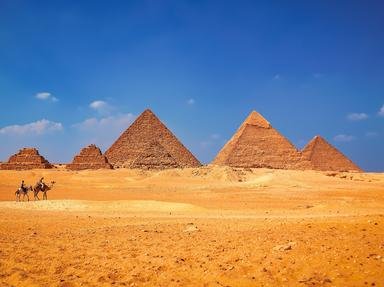Quiz Answer Key and Fun Facts
1. Before the mummy was sealed in his tomb, the sem-priest performed the Opening of the Mouth ceremony. Why was this ceremony significant to the ancient Egyptians?
2. To where did the mummy travel during his journey to the afterlife?
3. Which ancient Egyptian god was the chief judge of the dead?
4. The first phase of the Final Judgement for ancient Egyptians was to plead their case before which panel?
5. When pleading their case before the panel, how did the ancient Egyptians know what to say when they were interrogated?
6. During phase two of the Final Judgement, which body organ, the only one left intact during mummifcation, was weighed?
7. What was considered to be the symbol for truth and justice in ancient Egypt?
8. What happened if ancient Egyptians found to be deceitful and dishonest?
9. The ancient Egyptians might be able to make it to the afterlife, even if they were not completely innocent of wrongdoing.
10. What did the ancient Egyptians call the afterlife?
Source: Author
ponycargirl
This quiz was reviewed by FunTrivia editor
bloomsby before going online.
Any errors found in FunTrivia content are routinely corrected through our feedback system.

